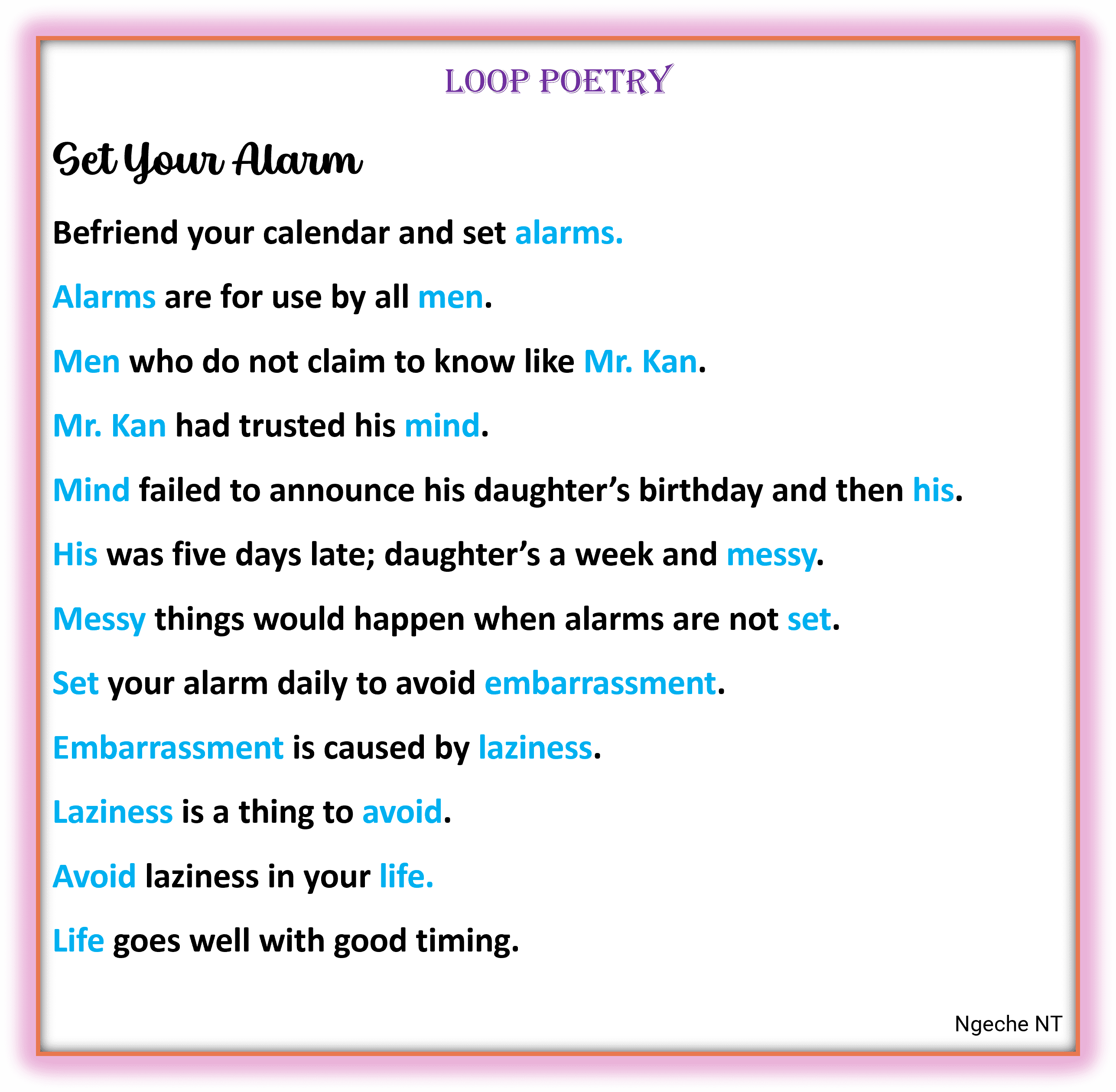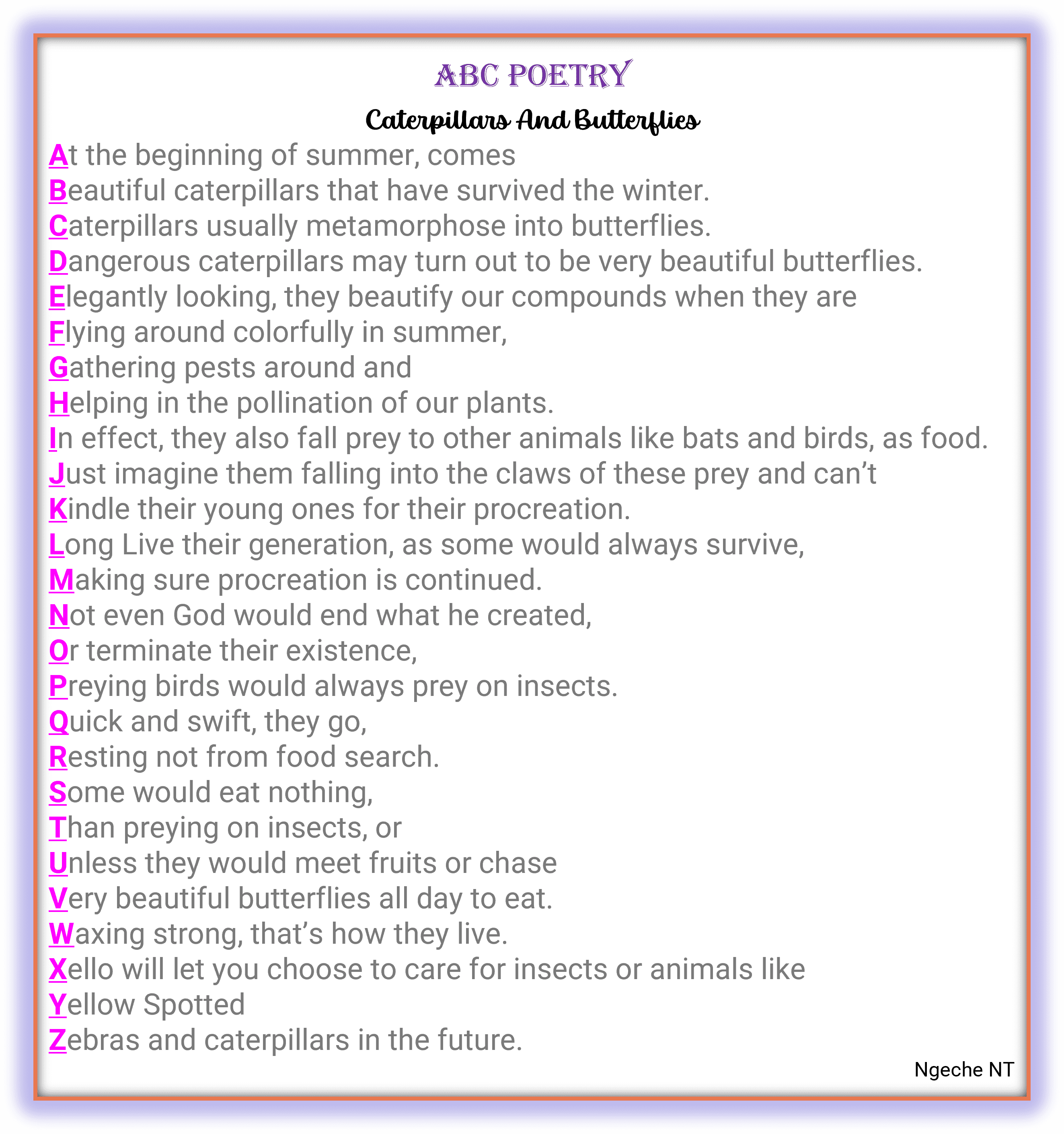What is Poetry?
What is Poetry?
Poetry is a form of literary expression that uses language to evoke emotions and create imagery. There are many different forms of poetry in the English language, each with its unique structure, style, and rules. In this post, we will explore some of the many different forms of poems in the English language.
1. Sonnet
A sonnet is a 14-line poem that follows a strict rhyme scheme and structure. The most common form of the sonnet is the Shakespearean sonnet, which consists of three quatrains and a final rhyming couplet. Sonnets are often used to express themes of love, admiration, and devotion.
2. Haiku
A haiku is a Japanese form of poetry that consists of three lines. The first and last lines contain five syllables, while the middle line contains seven syllables. Haikus often focus on themes of nature and the seasons.
3. Villanelle
A villanelle is a 19-line poem that consists of five tercets and a final quatrain. The first and third lines of the opening tercet are repeated throughout the poem, creating a musical effect. Villanelles often explore themes of love, loss, and nostalgia.
4. Free Verse
Free verse is a form of poetry that not follow a strict structure or rhyme scheme. Instead, the poet is free to use any form of language, rhythm, or imagery to create their own unique style. Free verse poems often explore themes of self-expression, individuality, and freedom.
5. Sestina
A sestina is a 39-line poem that consists of six stanzas of six lines each and a final three-line stanza called an envoy. The six end-words of the first stanza are repeated in a specific pattern throughout the poem, creating a complex and intricate structure. Sestinas often explore themes of memory, loss, and transformation.
6. Ode
An ode is a lyrical poem that is written in praise of a person, object, or idea. Odes often follow a specific structure, with multiple stanzas and a repeated refrain. Odes can be written on any topic, from the beauty of nature to the achievements of great artists or thinkers.
7. Ballad
A ballad is a narrative poem that tells a story in a simple, rhythmic style. Ballads often use a simple rhyme scheme and repeated refrains to create a musical effect. Ballads can be written on any topic, from historical events and folk tales to personal experiences and emotions.
8. ABC Poetry
Generally each line or stanza begins with the first letter of the alphabet and is followed by the successive letter, until the final letter is reached.
9, Loop Poetry
The main effect of the loop poem is caused by repeating the last word of each line as the first word of the next line. Loop Poetry is a poetry form created by Hellon. There are no restrictions on the number of stanzas nor on the syllable count for each line. One long stanza, no limit on number of lines, no rhyming scheme, the last word, first word scheme is maintained.
10. Minute Poem
The Minute Poem is a 60 syllable verse form, one syllable for each second in a minute. The theme should be an event that is over and done completely, as in a minute. Since the dominant line is short the effect is likely humorous, whimsical or semi-serious.
11. Acrostic poetry
12. Faith Poetry
13. Rhyming poetry
Rhyming poems are poems that feature rhyming words at the end of certain verses. Unlike free verse poetry, rhyming poems must contain words that sound alike. Generally, rhyming poetry follows some sort of set pattern, meaning the writer intends for certain lines to rhyme with one another. Besides the different kinds of patterns rhyming poetry follows, there are different kinds of rhyming poems themselves. Although most people learn about rhyming poetry during school, many continue to read and write this type of poetry for many years.
Summarily, the English language has a rich and diverse collection of poetic forms, each with its unique structure, style, and rules. Whether you are a poet or a reader of poetry, exploring these different forms can help to deepen your appreciation and understanding of this beautiful and evocative form of literary expression.
Some very good books on poetry are:
Nursery Rhyme Books
Poetry books for Kids
Poetry books for Teens
Poetry book for Teens love
Poetry books for women
Poetry books for men
Poems about animals
Get some examples of poems here








